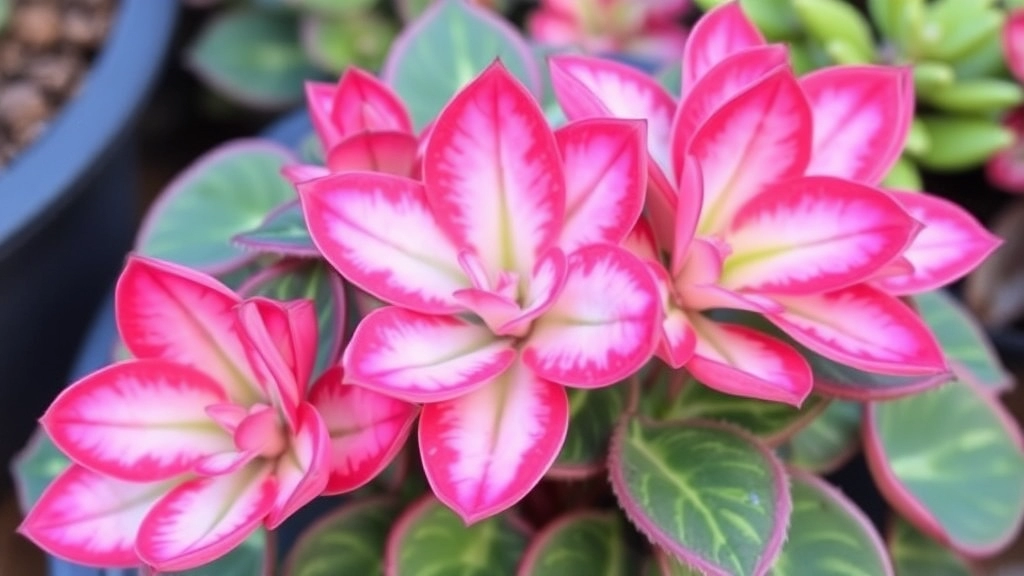Perfecting Your Variegated Kalanchoe Care Routine
Ever wondered how to perfect your Variegated Kalanchoe care routine? You’re in the right place. As a plant enthusiast, I know the struggle of keeping these beauties thriving. Let’s dive into the essentials of watering, sunlight, and soil to ensure your Variegated Kalanchoe stays vibrant and healthy.
Essential Care Tips
- Watering: First things first, watering is key. Make sure the soil is completely dry before giving your plant a good soak.
- Sunlight: Next, sunlight is crucial. Place your Kalanchoe in a spot where it gets plenty of indirect light.
- Soil: Finally, don’t forget about the soil. A well-draining mix will prevent root rot and keep your plant happy.
Follow these steps, and you’ll have a flourishing Variegated Kalanchoe in no time.
Choosing the Right Soil for Variegated Kalanchoe
When it comes to nurturing your variegated Kalanchoe, selecting the right soil can make all the difference.
You might wonder, âWhat type of soil is best for my beloved plant?â
The ideal soil for variegated Kalanchoe should be well-draining and slightly acidic.
- Cactus Mix: A pre-made cactus or succulent mix is often a great choice. These mixes typically contain sand or perlite, ensuring good drainage.
- Homemade Mix: If you prefer a DIY approach, combine equal parts of potting soil, coarse sand, and perlite. This mixture promotes airflow and prevents root rot.
- pH Level: Aim for a soil pH between 6.0 and 6.5. This range supports optimal nutrient absorption.
- Texture: Look for a gritty texture. This helps with drainage and mimics the plant’s natural habitat.
- Nutrient Content: While Kalanchoes don’t require nutrient-rich soil, a light mix with some organic matter can support initial growth.
Choosing the right soil is foundational for your plant’s health. For more detailed care tips, check out our Variegated Kalanchoe Care Guide. Additionally, if you’re interested in learning about other varieties, our Guide to Different Types of Kalanchoe is a great resource.
Ideal Light Conditions for Growth
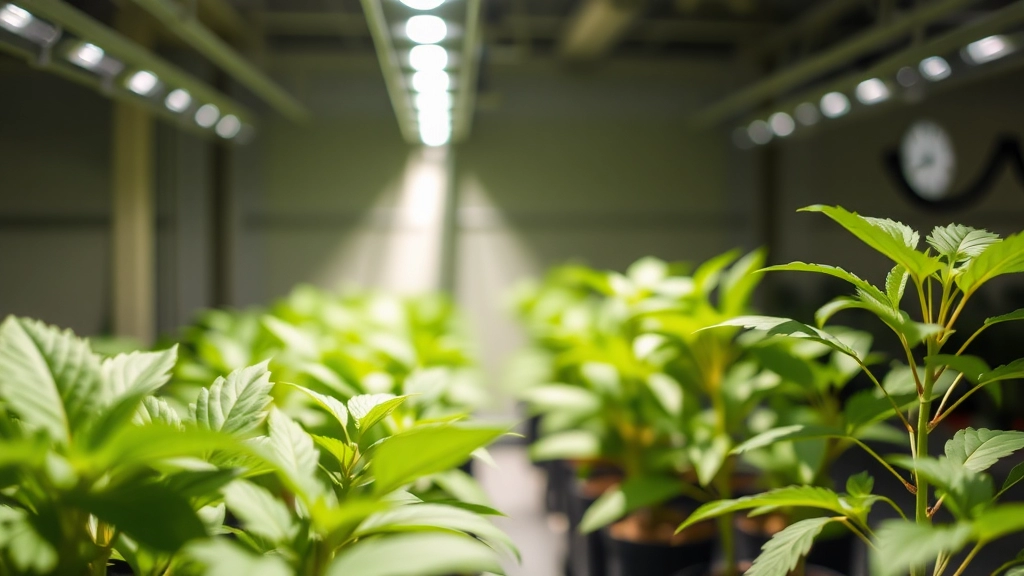
When it comes to keeping your variegated Kalanchoe thriving, light is everything.
You might be wondering, “How much light does my plant really need?”
The answer is quite simple: bright, indirect sunlight is the sweet spot.
Here’s how to ensure your Kalanchoe gets just the right amount:
- Location: Place it near a window that receives filtered light. A south or east-facing window is ideal.
- Duration: Aim for about 6 hours of light a day. Too little light can lead to leggy growth, while too much direct sun can scorch those beautiful leaves.
- Rotation: Rotate your plant every few weeks to ensure even growth. This helps all sides get their fair share of sunlight.
- Signs of Trouble: If you notice yellowing leaves or stretched-out stems, your Kalanchoe might be craving more light.
- On the flip side, if the leaves are turning brown or crispy, it could be getting too much sun.
Finding that balance is key!
Watering Schedule and Techniques
When it comes to caring for your variegated Kalanchoe, one of the most common concerns is how often to water. Overwatering and underwatering can both lead to serious issues, making it essential to find the right balance.
Understanding Watering Needs
Variegated Kalanchoe thrives in well-draining soil, which means it prefers to dry out between waterings. Here are some key points to keep in mind:
- Frequency: Water your Kalanchoe every 2-3 weeks during the growing season (spring and summer). In the dormant months (autumn and winter), reduce watering to once a month.
- Soil Check: Always check the top inch of soil. If it feels dry, it’s time to water. If it’s still moist, hold off for a few more days.
- Watering Technique: Use room temperature water and pour it directly onto the soil, avoiding the leaves to prevent rot.
Signs of Water Issues
Recognising the signs of overwatering or underwatering can save your plant from distress:
- Overwatering Symptoms: Yellowing leaves, mushy stems, and a foul smell from the soil indicate too much water.
- Underwatering Symptoms: Wrinkled leaves or a drooping appearance suggest your Kalanchoe is thirsty.
Tips for Effective Watering
To ensure your variegated Kalanchoe thrives, consider these practical tips:
- Use a Pot with Drainage Holes: This prevents water from pooling at the bottom.
- Water in the Morning: This allows the plant to absorb moisture before the heat of the day.
- Adjust for Seasons: Be mindful of temperature changes; you may need to adjust your watering schedule accordingly.
For more detailed information on caring for variegated Kalanchoe, check out our guide on variegated Kalanchoe care. Additionally, if you’re interested in learning about other Kalanchoe varieties, our Kalanchoe succulent identification guide is a great resource.
Temperature and Humidity Requirements
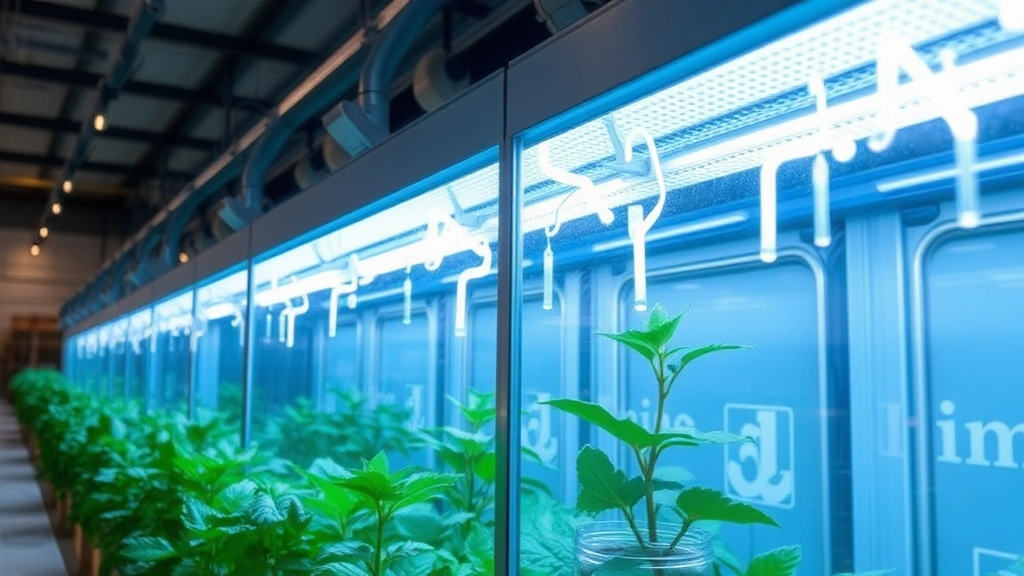
When caring for your variegated Kalanchoe, understanding its temperature and humidity needs is essential. Are you worried about your plant thriving in your home environment?
Temperature Needs
Variegated Kalanchoes prefer a warm climate, ideally between 18°C to 24°C (65°F to 75°F) during the day. Here are some key points to consider:
- Night Temperatures: At night, a slight drop to 10°C to 15°C (50°F to 59°F) is acceptable.
- Avoid Extremes: Protect your plant from sudden temperature changes. Drafts from windows or air conditioning can stress it.
- Indoor Placement: Keep it away from heaters or radiators, as excessive heat can be detrimental.
Humidity Levels
Humidity plays a crucial role in the overall health of your Kalanchoe.
- Ideal Range: Variegated Kalanchoes thrive in moderate humidity levels, around 40% to 60%.
- Dry Air Caution: If your home is particularly dry, especially in winter, consider using a humidifier or placing a tray of water near your plant to boost moisture levels.
- Misting: Light misting can help, but avoid overdoing it; too much moisture can lead to rot.
When it comes to nurturing your variegated Kalanchoe, fertilization plays a pivotal role in promoting vibrant growth and maintaining those stunning leaf patterns. You might be wondering, “How often should I fertilize?” or “What type of fertiliser is best?” Let’s delve into the essentials of fertilizing your plant effectively.
Choosing the Right Fertilizer
– **Balanced Fertilizer**: Opt for a balanced, water-soluble fertiliser with an NPK ratio of 10-10-10 or 20-20-20.
– **Cactus or Succulent Fertiliser**: Alternatively, a cactus or succulent fertiliser can also work wonders, as these are specifically formulated for plants with similar needs.
Frequency of Application
– **Growing Season**: During spring and summer, fertilise every 4-6 weeks to support active growth.
– **Dormant Season**: In autumn and winter, reduce or stop fertilising, as the plant enters dormancy.
Application Techniques
– **Dilution**: Always dilute the fertiliser according to the package instructions to prevent root burn.
– **Watering**: Apply fertiliser after watering to ensure that nutrients are absorbed effectively without shocking the roots.
Signs of Nutrient Deficiency
– **Pale Leaves**: If your Kalanchoe’s leaves are losing their vibrant colour, it might be time to reassess your fertilisation routine.
– **Stunted Growth**: A lack of growth could indicate insufficient nutrients, signaling a need for fertilisation.
For more detailed guidance on caring for your variegated Kalanchoe, check out our [variegated Kalanchoe propagation tips](https://planthq.org/variegated-kalanchoe-propagation-easy-methods-tips/) and learn about the [maximum size of Kalanchoe growth potential](https://planthq.org/maximum-size-of-kalanchoe-growth-potential-explained/). These resources will help you ensure your plant thrives all year round.
Pruning and Maintenance Tips for Variegated Kalanchoe
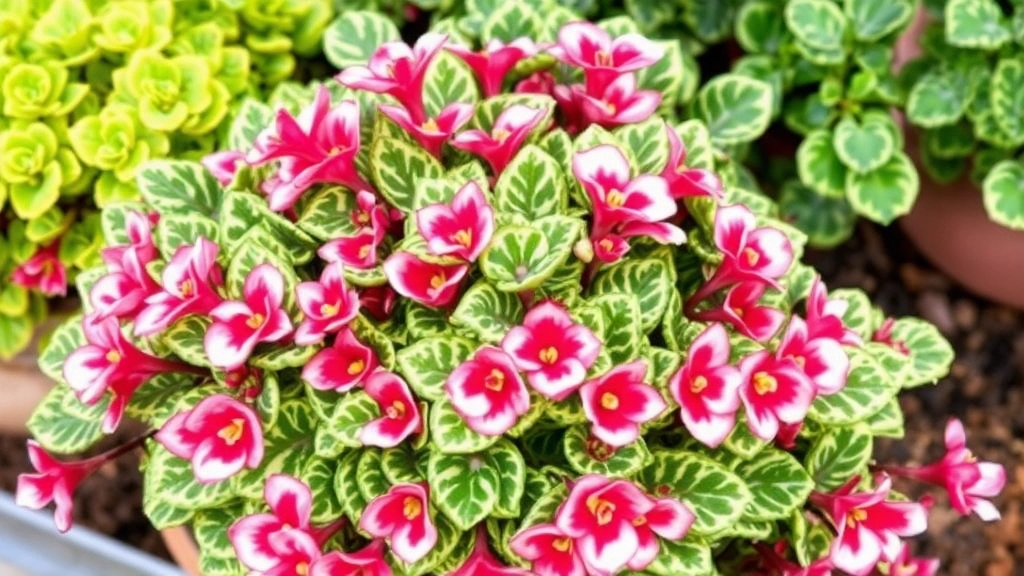
So, you’ve got your variegated Kalanchoe thriving, but are you keeping it in tip-top shape? Pruning and maintenance are key to ensuring your plant stays healthy and vibrant.
Why Prune?
Pruning isn’t just about aesthetics; it’s crucial for your plant’s health. Here’s why:
- Encourages Growth: Regular pruning helps stimulate new growth, keeping your plant lush.
- Prevents Overcrowding: It ensures your Kalanchoe doesn’t become too bushy, allowing for better air circulation.
- Removes Dead Leaves: Snipping away any dead or yellowing leaves helps prevent disease.
When to Prune
Timing is everything. The best time to prune your variegated Kalanchoe is during its active growth phase, typically in spring and summer.
How to Prune
Here’s a simple step-by-step guide to make it easy:
- Gather Your Tools: You’ll need sharp, clean scissors or pruning shears.
- Identify What to Cut: Look for dead, damaged, or overcrowded stems.
- Make Clean Cuts: Cut just above a leaf node to encourage new growth.
- Don’t Overdo It: Aim to remove no more than 20-30% of the plant at a time.
Maintenance Tips
Keeping your Kalanchoe in shape goes beyond just pruning. Here are some quick maintenance tips:
- Dusting Leaves: Wipe leaves with a damp cloth to keep them dust-free and photosynthesising effectively.
- Check Soil Moisture: Regularly check the soil to ensure it’s not too dry or soggy.
- Rotate Your Plant: Give it a gentle turn every few weeks to ensure even light exposure.
Common Pests and Diseases
As we dive deeper into caring for your variegated Kalanchoe, it’s crucial to address the potential threats from pests and diseases that can hinder its growth.
What Pests Should You Watch For?
- Mealybugs: These small, white, cotton-like pests often hide in the leaf axils. They suck sap from the plant, leading to stunted growth.
- Spider Mites: Tiny and hard to spot, these pests create fine webs on the leaves and cause yellowing and leaf drop.
- Aphids: Often found on new growth, these small green insects can lead to wilting and distorted leaves.
- Scale Insects: These pests appear as small, brown bumps on the stems and leaves. They also suck sap, weakening the plant.
Common Diseases to Be Aware Of
- Root Rot: Caused by overwatering, this disease can lead to mushy roots and wilting. Always ensure your pot has proper drainage.
- Powdery Mildew: This fungal infection manifests as a white powdery substance on leaves, often due to high humidity and poor air circulation. Learn more about treating powdery mildew on Kalanchoe plants.
- Leaf Spot: Dark spots on leaves can indicate fungal infections, usually due to water sitting on the leaves.
Prevention and Treatment Strategies
- Regular Inspections: Check your Kalanchoe weekly for signs of pests or diseases. Early detection is key.
- Neem Oil: This natural pesticide can effectively manage pest infestations. Spray it on affected areas, following the instructions on the label.
- Proper Watering: Avoid letting your plant sit in water. Ensure the soil dries out between watering sessions to prevent root rot. For more tips, read about best practices for watering Kalanchoe tomentosa.
- Good Air Circulation: Place your plant in a well-ventilated area to help prevent fungal diseases.
Propagation Methods for Variegated Kalanchoe
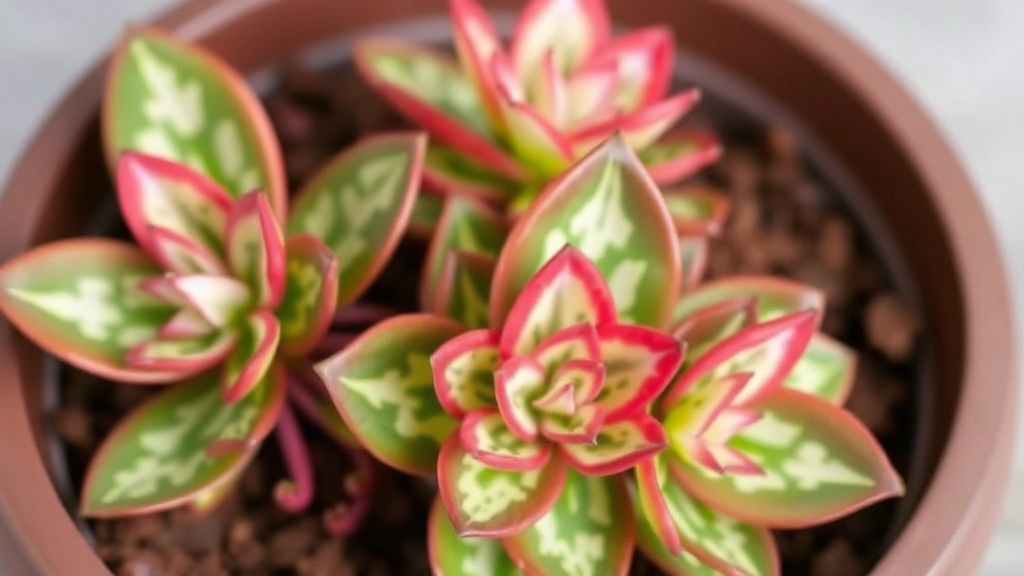
So, you’re keen on expanding your collection of variegated Kalanchoe?
Propagation can be a fun and rewarding process, and it’s easier than you might think.
Let’s dive into some methods that can help you grow new plants from your existing ones.
Leaf Cuttings
One of the simplest ways to propagate is through leaf cuttings:
- Select a Healthy Leaf: Look for a plump, healthy leaf from your Kalanchoe.
- Cut and Dry: Use a clean, sharp knife to cut the leaf. Let it dry for a day or two to form a callus.
- Planting: Place the leaf on top of well-draining soil, or bury the cut end slightly.
- Water Sparingly: Mist the soil lightly, but avoid soaking it.
Stem Cuttings
Another effective method is using stem cuttings:
- Choose a Stem: Pick a healthy stem with a few leaves.
- Cut and Dry: Cut the stem just below a leaf node and allow it to dry for a few hours.
- Planting: Insert the cut end into well-draining soil.
- Watering: Water lightly, keeping the soil just moist.
Offsets
If your Kalanchoe has produced offsets (little baby plants):
- Gently Remove: Carefully separate the offset from the main plant.
- Planting: Place it in a small pot with fresh soil.
- Care: Water lightly and keep it in a warm spot.
Tips for Success
- Light: Ensure your cuttings get bright, indirect light.
- Humidity: A humidity dome can help keep moisture in, but it’s not essential.
- Patience: It might take a few weeks for roots to develop, so hang tight!
Repotting is an essential aspect of caring for your variegated Kalanchoe, especially as it grows and thrives. You might be wondering when and how to repot your plant effectively.
**When to Repot**
– **Signs of Root Bound**: If you notice roots growing out of the drainage holes or circling the top of the soil, it’s time to repot.
– **Soil Degradation**: If the soil appears compacted or has lost its nutrients, a fresh mix is necessary.
– **Growth Stagnation**: If your Kalanchoe isn’t growing as vigorously as before, it may need more space.
**Choosing the Right Pot**
– **Size Matters**: Select a pot that is one size larger than the current one. This allows for growth without overwhelming the plant.
– **Drainage is Key**: Ensure the new pot has adequate drainage holes to prevent waterlogging.
**Soil Selection**
– **Well-Draining Mix**: Use a cactus or succulent mix to provide the right balance of drainage and nutrients.
– **Additives**: Consider adding perlite or sand to enhance drainage further.
**Repotting Steps**
1. **Prepare the New Pot**: Place a layer of fresh soil at the bottom.
2. **Remove the Plant**: Gently take the Kalanchoe out of its current pot, being careful not to damage the roots.
3. **Inspect the Roots**: Trim any dead or rotting roots with sterilised scissors.
4. **Position the Plant**: Place the Kalanchoe in the centre of the new pot and fill in with soil, ensuring it’s stable.
5. **Watering**: Lightly water the plant after repotting to help settle the soil, but avoid soaking.
**Aftercare**
After repotting, keep an eye on your plant. It may need a little extra care as it adjusts to its new home.
– **Light Conditions**: Ensure it receives adequate light but avoid direct sunlight for a few days.
– **Watering Schedule**: Wait a week before watering again to prevent root rot.
Proper repotting not only promotes healthy growth but also enhances the overall appearance of your variegated Kalanchoe. For more detailed care tips, you can refer to the [complete guide to harpoon leaf Kalanchoe care](https://planthq.org/complete-guide-to-harpoon-leaf-kalanchoe-care-propagation/) or learn about [how to care for Kalanchoe with red flowers](https://planthq.org/how-to-care-for-kalanchoe-with-red-flowers/).
Seasonal Care Adjustments for Variegated Kalanchoe
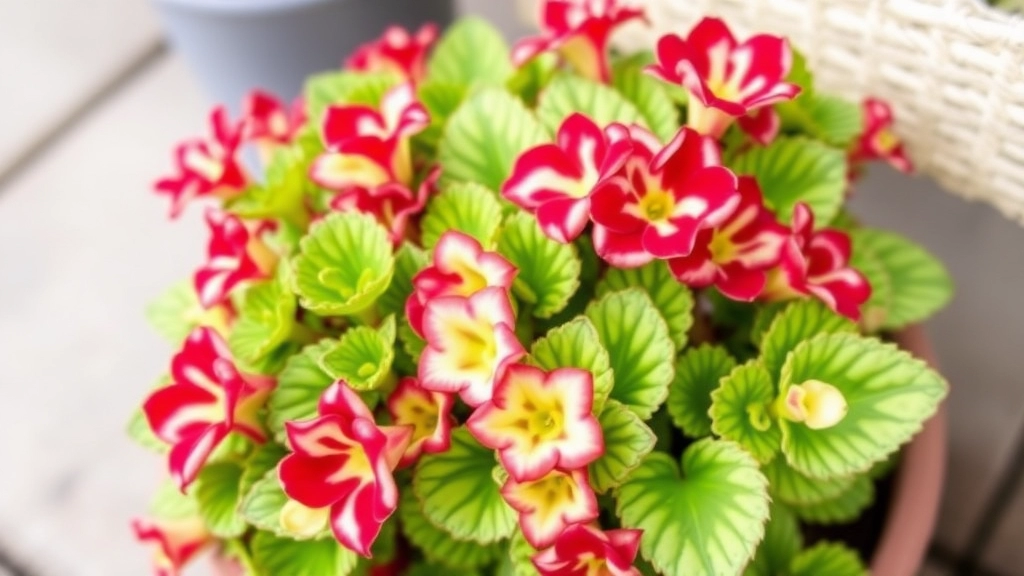
As the seasons change, so do the needs of your variegated Kalanchoe. You might be wondering how to keep your plant thriving through all the shifts in weather.
Spring: Awakening Growth
In spring, your Kalanchoe is waking up from its winter slumber. Here’s how to give it a boost:
- Increase Watering: As the temperatures rise, your plant will need more moisture. Water when the top inch of soil feels dry.
- Fertiliser Time: Start feeding with a balanced fertiliser every 4-6 weeks to encourage new growth.
- Light Exposure: Ensure it gets plenty of bright, indirect sunlight to support its growth spurt.
Summer: Sun and Care
Summer brings warmth, but too much sun can scorch your Kalanchoe. Here’s how to find that sweet spot:
- Monitor Sunlight: If it’s getting direct sun, consider moving it to a shadier spot to prevent leaf burn.
- Consistent Watering: Keep an eye on the moisture level. Hot weather can dry out the soil quickly, so check more often.
- Humidity Levels: If your home is dry, misting can help. Just don’t overdo it!
Autumn: Preparing for Dormancy
As autumn rolls in, your Kalanchoe starts to slow down. Here’s what to do:
- Cut Back on Watering: Reduce your watering frequency as the plant enters dormancy. Water only when the soil is completely dry.
- Fertiliser Pause: Stop fertilising as the plant prepares for winter.
Winter: Keeping It Cozy
Winter can be tough for your Kalanchoe. Here’s how to keep it happy:
- Light Source: Ensure it gets as much light as possible. A south-facing window is ideal.
- Temperature Check: Keep it away from cold drafts and heating vents. Aim for a consistent temperature.
- Minimal Watering: Water sparingly, as the plant is in dormancy. Overwatering can lead to root rot.
As we delve deeper into caring for your variegated Kalanchoe, it’s essential to recognise the signs of overwatering or underwatering. These two issues can significantly impact your plant’s health and vitality.
### Signs of Overwatering
Overwatering is a common mistake that many plant enthusiasts make. If you notice any of the following symptoms, it might be time to reassess your watering habits:
– **Yellowing Leaves**: The leaves may start to turn yellow, particularly the lower ones.
– **Wilting**: Surprisingly, overwatered plants can also appear wilted, as roots become waterlogged and unable to absorb nutrients.
– **Root Rot**: If you notice a foul smell coming from the soil, it could indicate root rot. Gently remove the plant to inspect the roots; they should be firm and white, not mushy or brown.
– **Mould Growth**: Excess moisture can lead to mould forming on the soil surface, which is a clear sign of overwatering.
### Signs of Underwatering
On the flip side, underwatering can be just as detrimental. Here are the signs to watch for:
– **Crispy Leaves**: Leaves may become dry and crispy, particularly at the edges.
– **Shrivelling**: The plant may start to shrivel as it loses moisture.
– **Dropping Leaves**: If your Kalanchoe is dropping leaves, it may be a sign that it’s not getting enough water.
– **Soil Pulling Away**: If the soil pulls away from the sides of the pot, it’s an indication that it’s too dry.
### Finding the Balance
To maintain a healthy variegated Kalanchoe, aim for a balanced watering routine. Here are some tips:
– **Check Soil Moisture**: Use your finger to check the top inch of soil. If it feels dry, it’s time to water.
– **Water Thoroughly**: When watering, ensure that water drains from the bottom of the pot to avoid waterlogging.
– **Adjust Frequency**: Depending on the season, adjust your watering frequency. During warmer months, your plant may require more water compared to the cooler months.
For more detailed information on maintaining your plant’s health, you might find our [complete care guide for Kalanchoe Beharensis Variegated](https://planthq.org/complete-care-guide-for-kalanchoe-beharensis-variegated/) and tips on [treating powdery mildew on Kalanchoe plants](https://planthq.org/treating-powdery-mildew-on-kalanchoe-plants/) helpful.
Troubleshooting Common Issues
So, you’ve got your variegated Kalanchoe looking all cute and vibrant, but something feels off?
Don’t sweat it; we’ve all been there.
Here are some common issues you might face and how to tackle them:
Yellowing Leaves
- Overwatering: If the leaves are turning yellow, it could be a sign of overwatering. Check the soilâif it’s soggy, hold off on watering for a bit.
- Nutrient Deficiency: Sometimes, yellowing can indicate a lack of nutrients. A balanced fertiliser can help perk things up.
Dropping Leaves
- Underwatering: If your plant is dropping leaves, it might be thirsty. Give it a good drink and adjust your watering schedule.
- Temperature Shock: Sudden changes in temperature can stress your Kalanchoe. Keep it in a stable environment.
Wilting
- Water Issues: Wilting can mean either too much or too little water. Check the soil moisture and adjust accordingly.
- Pest Infestation: Pests like aphids can cause wilting. Inspect your plant closely and treat with insecticidal soap if needed.
Leggy Growth
- Insufficient Light: If your Kalanchoe is stretching towards the light, it’s craving more sunshine. Move it to a brighter spot.
Brown Tips
- Low Humidity: If the tips of the leaves are browning, it might be too dry. Consider misting your plant or placing it on a pebble tray with water.
- Over-Fertilisation: Too much fertiliser can lead to brown tips. Stick to the recommended dosage.
Root Rot
- Signs: If your plant is drooping and the soil smells foul, root rot might be the culprit.
- Solution: Remove it from the pot, trim away the rotten roots, and repot in fresh, well-draining soil.
Pest Problems
- Common Pests: Watch out for mealybugs and spider mites.
- Prevention: Regularly check your plant and wipe down leaves with a damp cloth to keep pests at bay.
FAQs on Variegated Kalanchoe Care
What are the ideal light conditions for a variegated Kalanchoe?
Variegated Kalanchoe thrives in bright, indirect sunlight. Place it near a window that receives filtered light, ideally a south or east-facing window. Aim for about 6 hours of light a day to prevent leggy growth or leaf scorch.
What temperature range is best for a variegated Kalanchoe?
These plants prefer a warm climate, between 18°C to 24°C (65°F to 75°F) during the day. At night, temperatures can drop to 10°C to 15°C (50°F to 59°F). Avoid sudden temperature changes and keep the plant away from heaters or air conditioning drafts.
How should I manage humidity levels for my variegated Kalanchoe?
Variegated Kalanchoes thrive in moderate humidity levels, around 40% to 60%. If your home is particularly dry, especially in winter, consider using a humidifier or placing a tray of water near the plant. Light misting can also help, but avoid overdoing it to prevent rot.
Why is pruning important for variegated Kalanchoe?
Pruning is essential for encouraging new growth, preventing overcrowding, and removing dead leaves. It helps keep the plant healthy and vibrant. The best time to prune is during its active growth phase, typically in spring and summer.
What are the steps for pruning a variegated Kalanchoe?
To prune your Kalanchoe, gather sharp, clean scissors or pruning shears. Identify dead, damaged, or overcrowded stems and make clean cuts just above a leaf node. Aim to remove no more than 20-30% of the plant at a time.
How can I propagate my variegated Kalanchoe?
You can propagate variegated Kalanchoe through leaf cuttings, stem cuttings, or offsets. Select a healthy leaf or stem, let it dry to form a callus, and then plant it in well-draining soil. For offsets, gently remove them from the main plant and place them in fresh soil.
What seasonal care adjustments should I make for my variegated Kalanchoe?
In spring, increase watering and start fertilizing. In summer, monitor sunlight and maintain consistent watering. In autumn, reduce watering and pause fertilizing. In winter, ensure the plant gets enough light, keep it away from cold drafts, and water sparingly.
How often should I rotate my variegated Kalanchoe?
Rotate your plant every few weeks to ensure even growth and light exposure. This helps all sides of the plant get their fair share of sunlight, promoting balanced growth.
What should I do if my Kalanchoe’s leaves are turning yellow or brown?
Yellowing leaves may indicate a need for more light, while brown or crispy leaves could mean the plant is getting too much direct sunlight. Adjust the light conditions accordingly to find the right balance.
References
-
Kalanchoe Light Requirements
-
Kalanchoe Thyrsiflora Care Guide
-
How to Grow Kalanchoe
